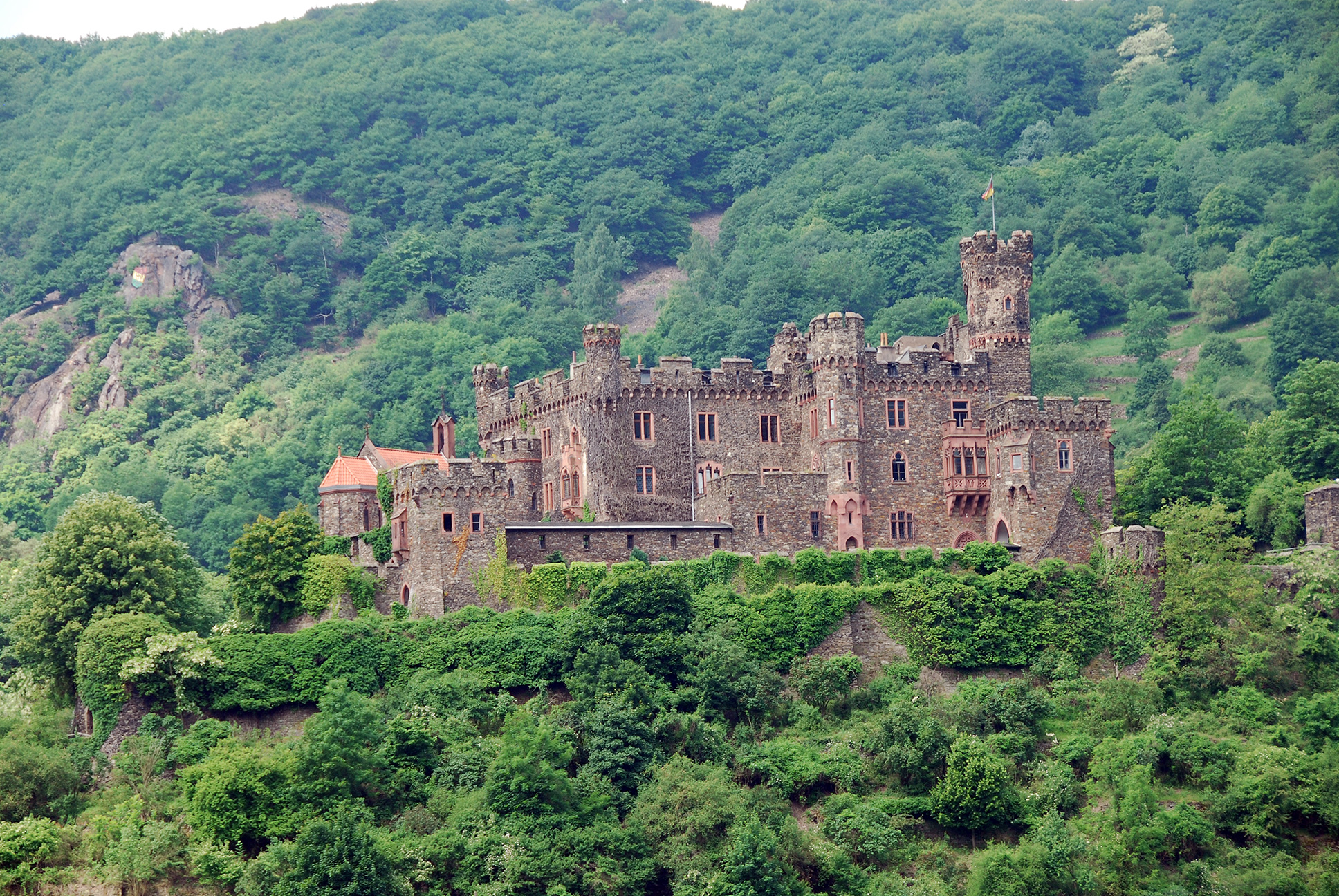Ghost of Burg Reichenstein
Like other castles along the Middle Rhine Valley, Burg Reichenstein was built with noble intent but, in time, gave way to the greed of robber knights that came to live with its walls. Reichenstein started as church property under the Imperial Abbey of Kornelimünster.

The abbot farmed the castle out to a bailiff. Over time the bailiffs turned robber knights, getting rich off boats traveling the River Rhine. The Archbishop of Mainz raised an army and took the castle, leveling it to the ground. The resident bailiff, Philipp von Hohenfels, promised to change his ways in return for his life. Instead, he rebuilt the castle and returned to his old ways. This transpired during the "Great Interregnum," but when Rudolf von Habsburg was elected emperor in 1273, he began a campaign of ejecting the robber knights from their castles. In 1282, it was Burg Reichenstein's turn, the castle was sieged, and the master of the castle, Dietrich von Hohenfels, was captured and beheaded. The castle was once again destroyed. Over the centuries, it passed to numerous hands, with the current castle being restored in the 19th century.
Given Burg Reichenstein's history, it is unsurprising that the castle is home to a ghost.
The ghost is heard and felt rather than seen. Guests often complain that they do not feel alone, and windows and doors open and shut on their own accord. It's just as well the ghost is never seen, as it would likely be a frightening sight to behold.
The ghost is thought to be the spirit of Dietrich von Hohenfels, the robber knight defeated by Rudolf von Habsburg. After his defeat and capture, Hohenfels begged for his nine sons to be spared, knowing his fate was sealed. But Habsburg knew the sons were taught to rob, loot, and murder by the father and wanted to set an example that would deter other robber knights and so he refused Hohenfels request.
Instead, the sons were aligned in a row. Habsburg declared, "Look, you murderer, here are all your sons. In a moment, your head will roll in the sand, but should you manage to walk past your sons headless, I will keep every one of them alive that you manage to pass."
Hohenfels looked each son in the eye and then at the path he must walk to save them. Moments later, the robber knight's head was struck from his body with one stroke. But instead of collapsing to the ground, his body swayed a little, then managed to walk by each of his sons, one by one, before falling to the ground. And to his word, Habsburg pardoned the nine sons.
Victor Hugo visited Burg Reichenstein during one of its periods of ruin. As he explored it, he made a discovery.
"As I walked along, my glance fell onto a corner of a gravestone which emerged from the rubble. Quickly I bent down. I removed the mud with my hands and feet and in a few moments I had uncovered a very lovely tomb plate from the 14th century. It was made of red sandstone. On this plate lay a knight in armor who had no head."
